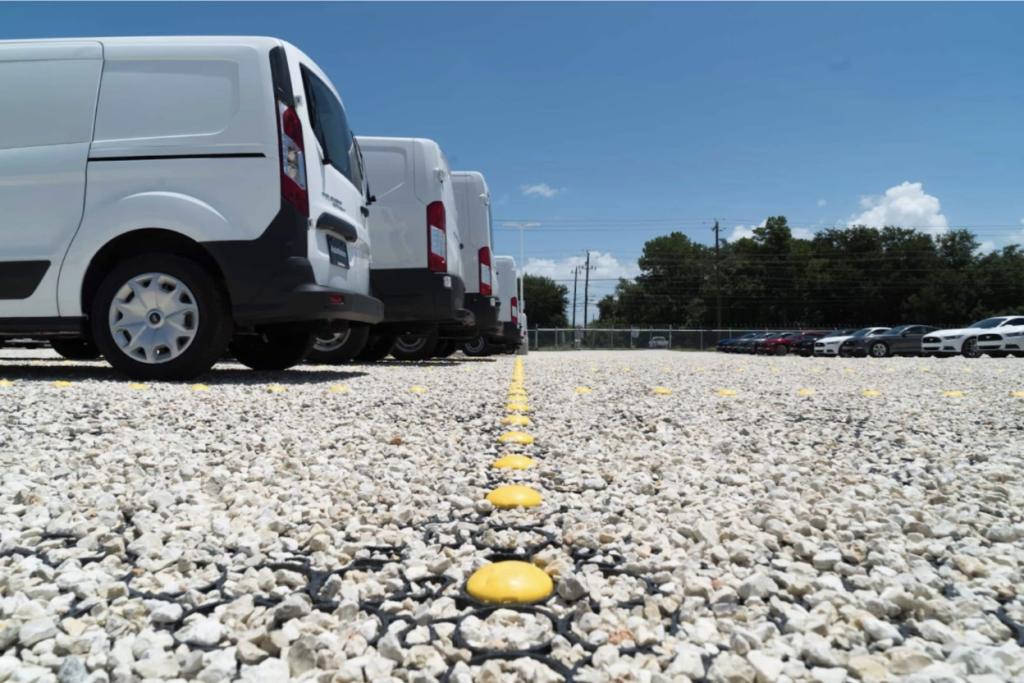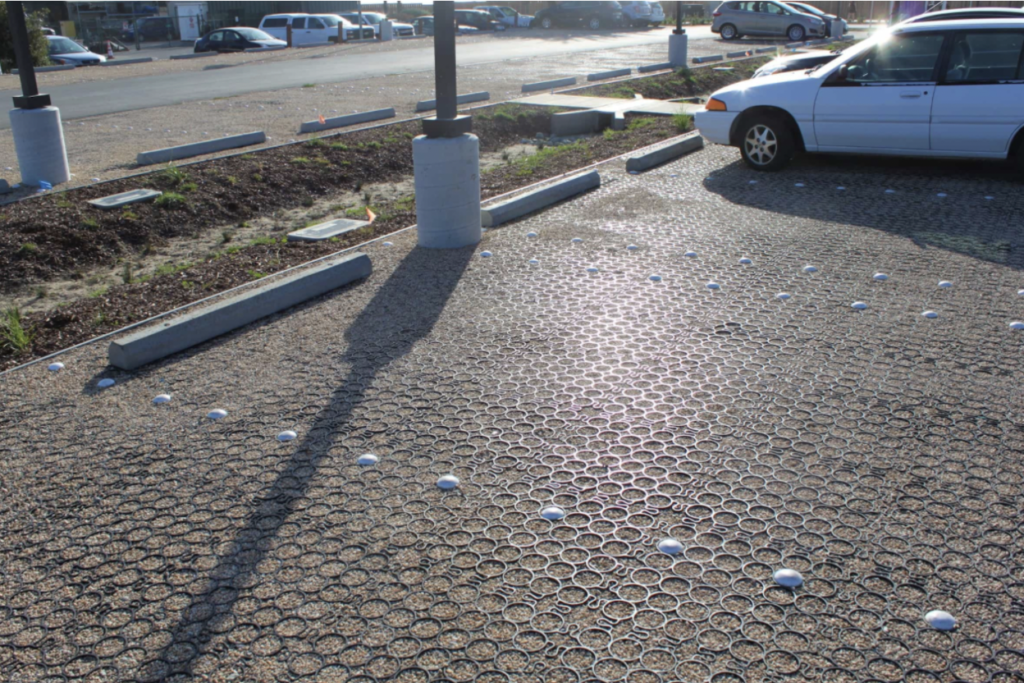If you’re looking for a new type of pavement to use instead of asphalt or concrete, permeable pavers are a great option. Permeable pavement has exploded in popularity lately and innovations in paving tech have resulted in pavers that are more durable, eco-friendly, and affordable over the long term.

Permeable pavement is also becoming a favorite because of the need to mitigate flooding in paved areas. As storms become more violent and certain areas suffer from increased levels of heavy rainfall, flooding is now a very real danger for people who never used to think twice about it. Flooding can destroy property and take lives, so the 98%-permeability of TRUEGRID permeable pavers, for instance, can come in handy.
Pavers like these not only drain stormwater much more effectively than traditional stormwater management methods, they also eliminate the need for additional costly drainage. Permeable pavers are better for the environment, easier to install, more affordable, and more effective at providing a stable, long-term parking solution for just about anyone.
One of the main benefits of permeable pavers is their lack of maintenance requirements. The level of maintenance required to keep permeable pavers in good shape is so low and affordable that it often feels like nothing at all in comparison to resurfacing or resealing other types of pavement about every 5 years.
There are, however, a few different ways you can care for your permeable pavers when the situation arises. In case you want to know all the tips and tricks for keeping your permeable pavers clean, let’s take a look at some maintenance tips.
How to Care for Your Permeable Pavers

1. Sweeping
Although permeable paver maintenance doesn’t need to be carried out very often, you should perform a bit of upkeep now and then. The simplest thing you can do to keep your pavers clean is to unclog them of trash and debris.
Anything you can see on the surface and pick up needs to be removed. Twigs, trash, leaves, and other debris can clog your pavers so using a broom and/or your hands to clear debris is a good idea.
2. Inspection
Inspecting your pavers at least 3 times a year after heavy rain is another important part of a permeable paver maintenance plan. Look for pooling water and visible dirt or material in the gaps between your pavers. This is an indication that you may have a clog beneath the surface.
During an inspection, you’ll also want to look for signs of wear and tear that may indicate your pavers need to be resealed. For paving stones and bricks, this is a critical part of preventing water infiltration and further damage.
3. Vacuuming/Power Washing
The most intensive part of a permeable paver maintenance guide involves vacuuming. When your pavers have a serious clog or something you can’t fix with basic tools like a broom, that’s when it’s time to bring in the heavy artillery.
Using a shop vacuum (6hp or better) two times per year is the best way to keep your pavers as unclogged as possible. One tip is to use a nail or a screwdriver to loosen up the packing between your pavers to facilitate better cleaning before you vacuum.
If you use granite chips between your pavers, you’ll likely suck some of them up during the vacuuming process, which is fine. After you’re done vacuuming, simply wash the chips off and put them back into place.
If you have permeable pavers filled with gravel like TRUEGRID PRO LITE or TRUEGRID PRO PLUS, you’ll want to power wash them instead. Use a garden hose to aim a direct spray at the pavers. This should help to clear out any dirt clumps and get things moving regularly again.
4. Snow and Ice
Snow and ice are usually not much of an issue for permeable pavement. The snow tends to melt and disappear through the pavers, while ice does need to be dealt with. You should remove as much snow from your permeable pavement as you can after each snowfall.
For ice, you can use salt as long as you don’t use too much. Permeable pavement requires less salt to remove ice, and many types will deteriorate if you use too much. You can also lay down some grit for traction, just don’t use sand. Sand will clog your pavers, so use gravel or small stones instead. You can always sweep it up later.
Caring for your Permeable Pavers is a Breeze
One of the upsides of permeable pavement and permeable plastic pavers, specifically, is that they require very little maintenance throughout their lifetime. Sweep every so often, inspect them after heavy rains, and vacuum or power wash them 3 times a year.

If you’re looking for permeable pavement that will last you up to 60 years with minimal maintenance required, call TRUEGRID to get in touch with a pavement professional today.



